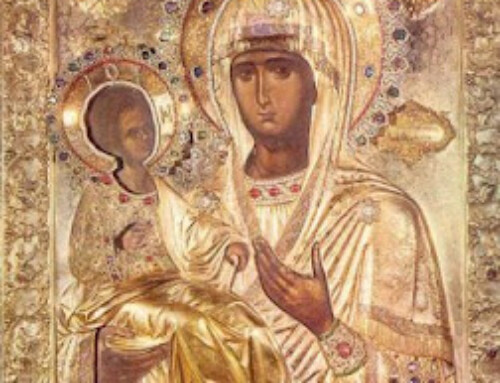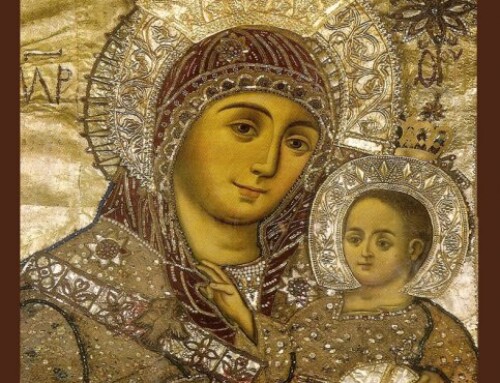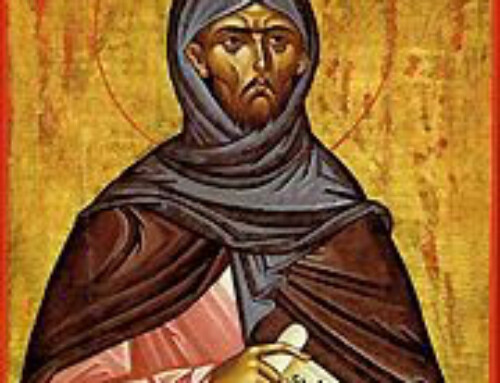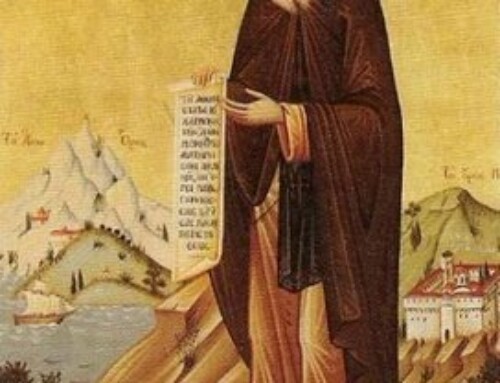Word Magazine May 1965 Page 6
ST. JOHN OF CRONSTADT
The newest Saint in the Orthodox Calendar is St. John of Cronstadt. He is the first Orthodox Saint to be canonized on American soil. He is one of the few secular priests to be canonized, and he died only in 1909.
Though many of us are acquainted with his spiritual diary, translated into English under the title: “My Life with Christ,” still very few Orthodox know very much of the life of this new Saint.
Jubilee Magazine, a liberal Roman Catholic monthly, which publishes picture stories about the Orthodox from time to time, gives us an insight into the life of St. John of Cronstadt.
He was born in a small Russian village in the Northern Province of Archangel. His father was a poor deacon and could barely provide the support for his family. Nevertheless, he managed to send young John to school. John was not too scholarly, but he did manage to graduate with honors from St. Petersburg Theological Academy.
Shortly after graduation, he married Elizabeth Nesvitsky and after ordination was assigned as an assistant to the priest in Cronstadt, a seaport town near St. Petersburg. He spent the rest of his life in this parish and did an outstanding pastoral work for the whole congregation and town. He was particularly concerned with the poor and the sick.
He was always active, but in a way he was a mystic. Though he was not an ascetic, he was a man of prayer and his source of inspiration was the Bible and the Divine Liturgy. He was a transformed man when he served the Liturgy. He urged his congregation to take frequent Communion and would give them absolution before the Liturgy, after they made a
general confession. This was unheard of, but the authorities permitted it, since the congregation was indeed repentant and sincere. Often during the Liturgy, he would cry out to God in a loud voice.
His fame spread beyond Cronstadt. The Services were always packed. There were regular revivals — people confessing their sins, crying, kneeling, praying. They came from all over Russia. Many were healed by the prayers of Father John. Even Tzar Alexander III summoned Fr. John to administer unction and give him Communion when he was dying.
He was a man of God but he was also a staunch royalist. He felt that the destinies of the Church and the Tzars were inextricably joined. Even during the 1905 Revolution, he was a defender of imperial absolutism, but the mobs never touched him. He died in 1909 and was buried at a monastery in St. Petersburg. It was a place of regular pilgrimages and many miracles were performed by him and through him. The Communists try to dissuade the people in visiting his grave and finally had to exhume his body, but he continued to live on in the memories of the people. He was destined to be a Saint, but the Church in Russia did not dare canonize him for fear of retribution by the Communists.
As such, the Russian Orthodox Church Outside of Russia, took it upon herself to canonize him. After performing the last Memorial Service (Requiem), then a Vigil Service, his icon was brought out and the first prayer service was held dedicated to the new Saint.
The solemnities took place in New York City and were presided over by the Primate, Metropolitan Philaret.





